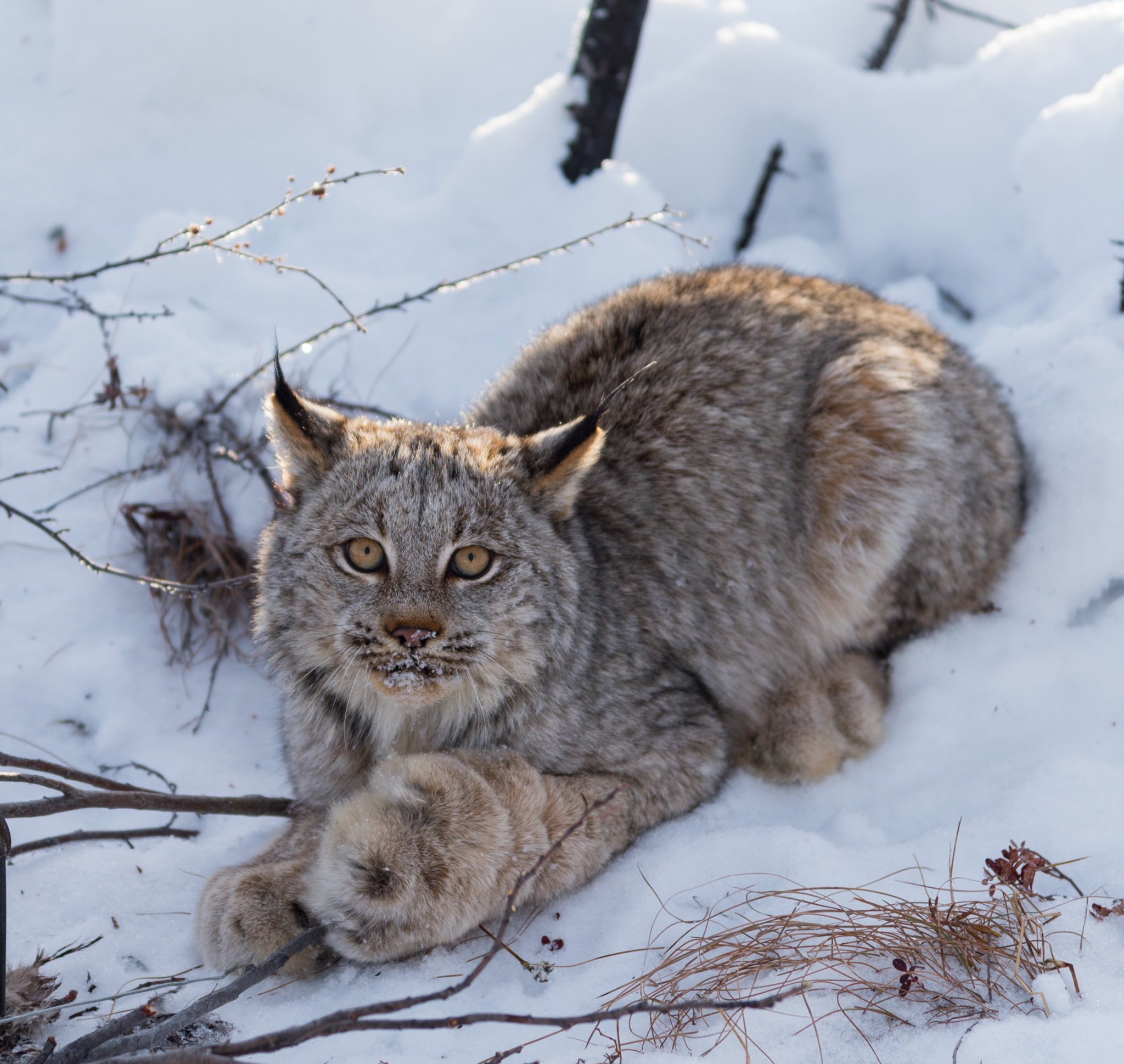CANADA LYNX RESEARCH

Natural History
The Canada lynx (Lynx canadensis) is the only member of the cat family throughout most of Alaska, owing largely to its adaptations to extreme environmental conditions in winter. The lynx’s huge paws allow it to float on top of the snow and capture snowshoe hares, which form the majority of its diet. Short, furry ears minimize heat loss while a thick coat of winter fur maximizes heat retention, enabling lynx to survive the coldest temperatures that occur in Alaska and Canada (-57° C / -70° F). Amazingly, lynx can also cope with hot summer temperatures reaching 32° C (90° F) by shedding into a thinner coat of fur and minimizing their activity during the hottest times of the day.
Research
My research concerns the movements of lynx and their patterns of habitat use across the landscape: How do lynx use mountainous terrain differently than flat terrain or riparian corridors? Are there seasonal differences movement patterns related to hunting and resting times? How does short-term weather affect their movement?
As a Master’s student, I assisted professor Knut Kielland in the capture and collaring of lynx near Fairbanks, Alaska. By looking closely at location data from GPS collars that the lynx carried, we discovered that lynx not only cross broad glacial rivers with regularity, they continue to do so right up until the rivers freeze over in mid-winter.
Dr. Kielland’s collaring efforts have grown into a large-scale project in Alaska investigating the movements of lynx throughout a population cycle – a period of about 10 years during which both lynx and snowshoe hare populations boom and crash in relative synchrony. Hare populations reach peak numbers at different times across North America and it is thought that this peak generally travels as a “wave” from the center of the continent to the edges of Alaska and Canada. One goal of the lynx project is to determine the proportion of individuals that move in the same direction as the “wave” of peak hare abundance, and to compare their survival with lynx that either remain in the same home range or disperse to geographic areas where hare abundance is declining.
I worked on the portion of this project taking place around Tetlin National Wildlife Refuge, as well as assisting with capture efforts near Wiseman. There has been a great diversity in movement patterns, with some lynx traveling hundreds of miles across regions of glaciated mountains, and others routinely venturing through alpine habitats where their typical sources of food are scarce.
Publications
Copyright © 2019 Dashiell Feierabend. All rights reserved.